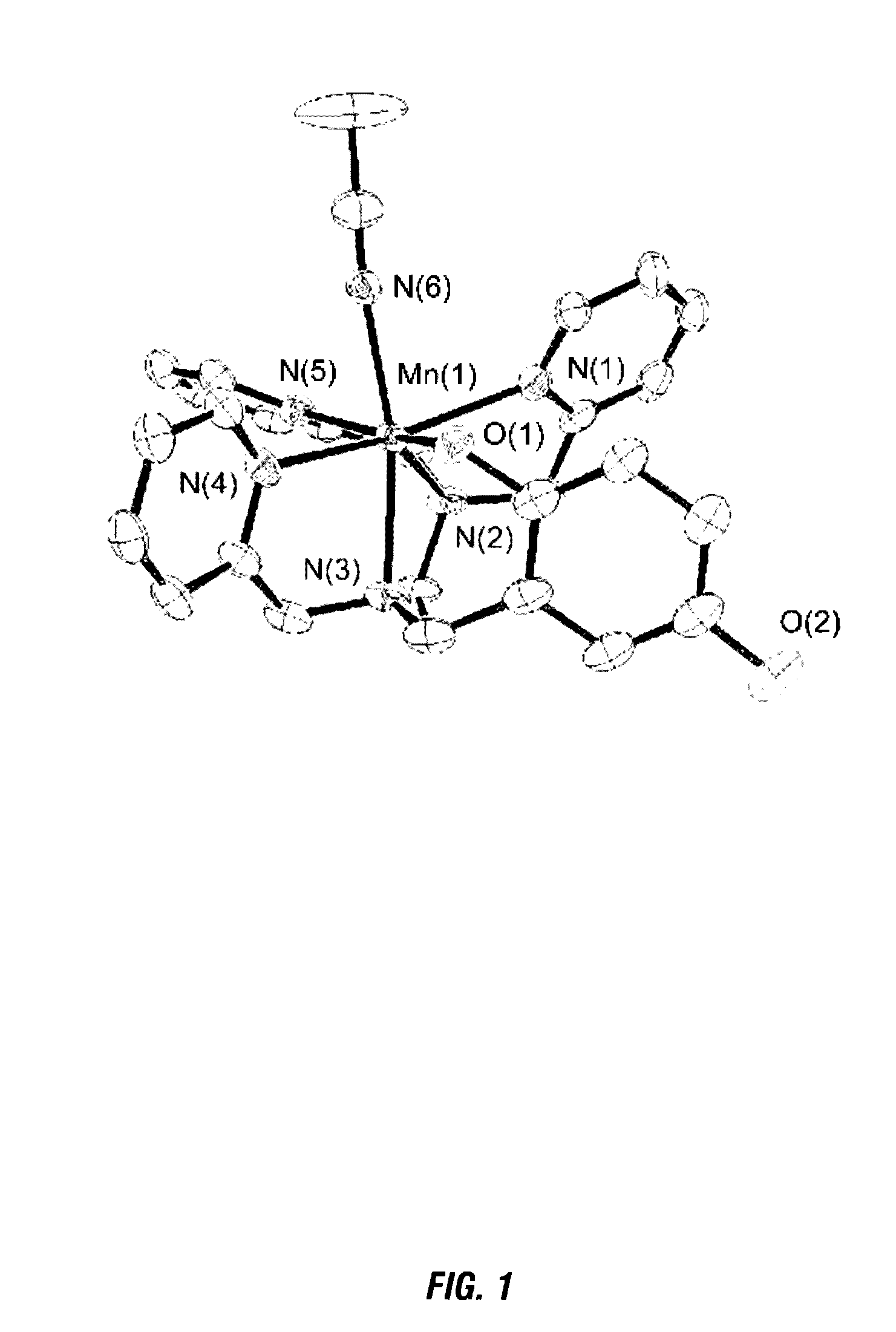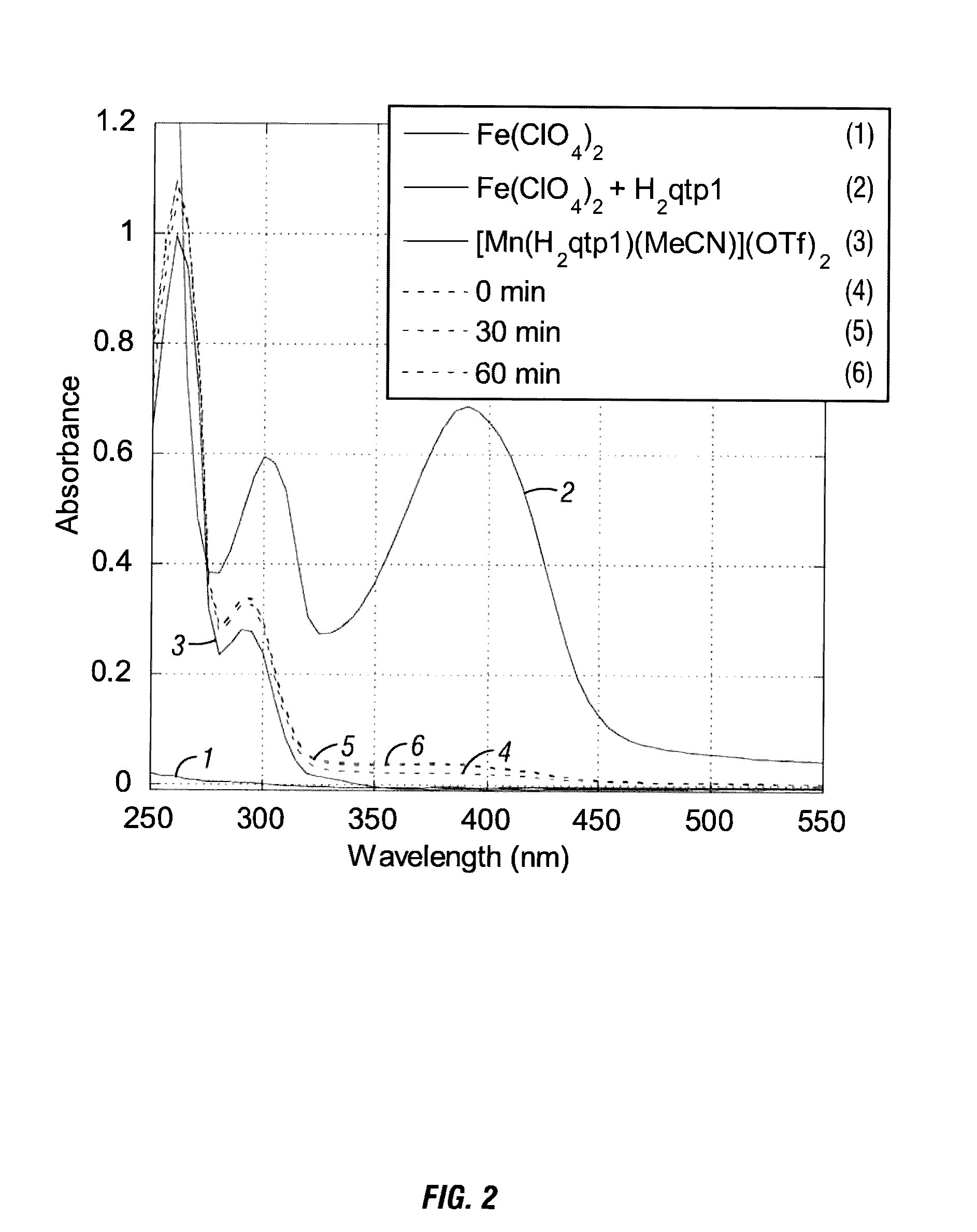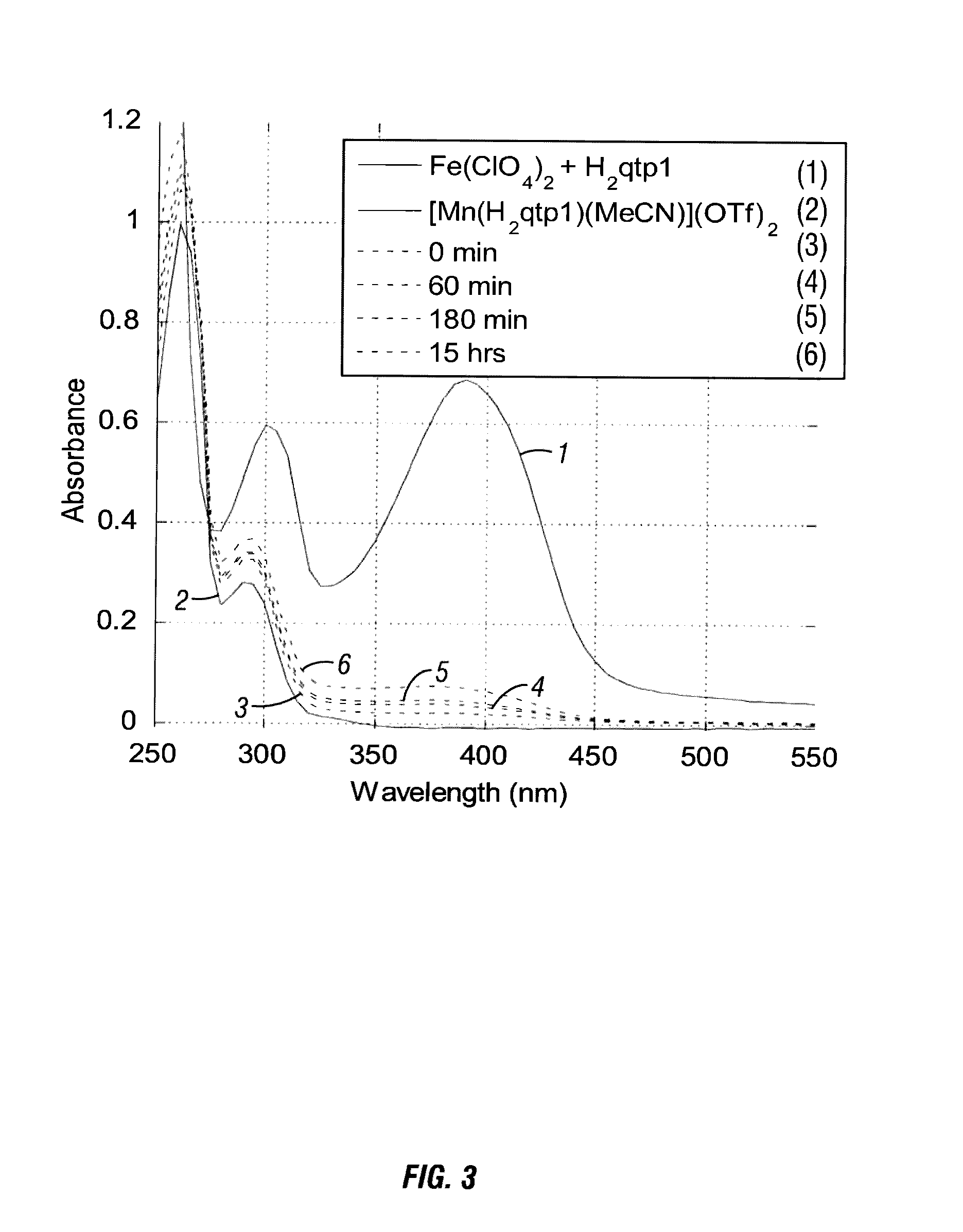Magnetic resonance imaging contrast agent capable of detecting hydrogen peroxide and reducing reactive oxygen species
- Summary
- Abstract
- Description
- Claims
- Application Information
AI Technical Summary
Benefits of technology
Problems solved by technology
Method used
Image
Examples
example 1
Syntheses and Characterization of N,N,N′-tris(2-pyridinylmethyl)-1, 2-ethanediamine
[0180]The procedure to synthesize and characterize N,N,N′-tris(2-pyridinyl-methyl)-1,2-ethanediamine is described in a paper by Mialane, et al. (Mialane, P.; Nivorojkine, A.; Pratviel, G.; Azêma, L.; Slany, M.; Godde, F.; Simaan, A.; Banse, F.; Kargar-Grisel, T.; Bouchoux, G.; Sainton, J.; Homer, O.; Guilhem, J.; Tchertanova, L.; Meunier, B.; Girerd, J.-J. Inorg. Chem. 1999, 38 (6), 1085-1092.) This Mialane paper is herein incorporated by reference in its entirety.
Syntheses and Characterization of a Mononuclear Mn(II) Complex with the Redox-Active Ligand N-(2, 5-dihydroxybenzyl)-N,N′,N′-tris(2-pyridinylmethyl)-1, 2-ethanediamine (H2qtp1)
[0181]For the organic component of the sensor, the hexadentate ligand N-(2,5-dihydroxybenzyl)-N,N′,N′-tris(2-pyridinylmethyl)-1,2-ethanediamine (H2qtp1, Scheme 1) is synthesized. The H2qtp1 ligand is prepared in one step from a reaction between the synthesized N,N,N′-t...
example 2
The Synthesis and Characterization of a Mononuclear Mn(II) Complex with the Redox-Active Ligand N,N′-bis(2-pyridinylmethyl)-1, 2-ethanediamine (H4qtp2)
[0203]
[0204]The H4qtp2 ligand as shown in Scheme 3 can be synthesized from the readily available N,N′-bis(2-pyridinylmethyl)-1,2-ethanediamine (bispicen) in three steps. The synthesis of H4qtp2 is more challenging than that of the closely related H2qtp1 in that the installation of the second quinol requires the addition of the reagents in two portions and a 40 h reaction time. The product is also hygroscopic and degrades under basic conditions (pH >10). An alternate route in which the two quinol groups were added to 1,2-ethanediamine before the picolyl arms was explored, but it presented drawbacks similar to those for the route proceeding through bispicen in that adding the fourth arm of the ligand required forcing conditions. Further, the quinols needed to be protected before the installation of the picolyl subunits; this and the sub...
PUM
 Login to View More
Login to View More Abstract
Description
Claims
Application Information
 Login to View More
Login to View More - R&D
- Intellectual Property
- Life Sciences
- Materials
- Tech Scout
- Unparalleled Data Quality
- Higher Quality Content
- 60% Fewer Hallucinations
Browse by: Latest US Patents, China's latest patents, Technical Efficacy Thesaurus, Application Domain, Technology Topic, Popular Technical Reports.
© 2025 PatSnap. All rights reserved.Legal|Privacy policy|Modern Slavery Act Transparency Statement|Sitemap|About US| Contact US: help@patsnap.com



